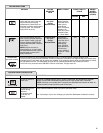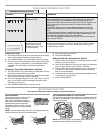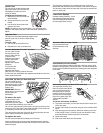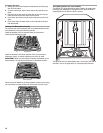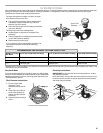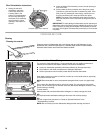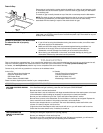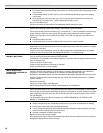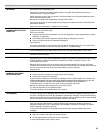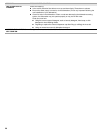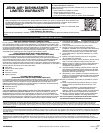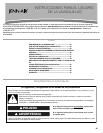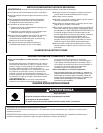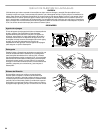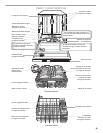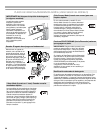
19
FOOD SOILS REMAIN
ON DISHES
Be sure the dishwasher is loaded correctly. Improper loading can greatly decrease the washing
performance. See “Dishwasher Use”.
Check filter to ensure it is properly installed. Clean it if needed. See Cleaning Instructions in
“Filtration System” section for details.
Select the proper cycle for the type of soils. The Sensor Wash or the Cookware/Bakeware cycles
can be used for tougher loads.
Be sure the incoming water temperature is at least 120°F (49ºC).
Use the proper amount of fresh detergent. More detergent is needed for heavier-soiled loads and
hard water conditions.
Scrape food from dishes prior to loading. Do not prerinse.
DISHES DIRTY/SUDS IN
DISHWASHER/CYCLE NOT
COMPLETE
If foam or suds are detected by the dishwasher sensing system, the dishwasher may not operate
properly or may not fill with water.
Suds can come from:
■ Using the incorrect type of detergent, such as dish detergent for hand washing dishes, laundry
detergent, or hand soap.
■ Not replacing the rinse aid dispenser cap after filling (or refilling) the rinse aid.
■ Using an excessive amount of dishwasher detergent.
Call for service.
If no water was present in the machine at any time during a heated wash cycle, the cycle will end
and the Clean LED will not come on. See “Will Not Fill” in “Troubleshooting.”
DID NOT SANITIZE If the sanitized light is blinking, the load is NOT sanitized. The cycle was interrupted in the final rinse,
or the temperature for your water heater is set too low. Set your water heater to 120ºF (49ºC).
DAMAGE TO DISHWARE Improper loading can cause dishes to become chipped or damaged. See specific loading
instructions within this guide.
BLINKING LIGHTS Blinking LED's will occur when the cycle is paused or when the cycle has been interrupted by
opening the door. In this case, the Start/Resume button LED and the Cycle Status Indicator LED(s)
all blink together to indicate that attention is needed. See “Start or Resume a Cycle” in the
“Dishwasher Use” section.
Blinking LED's can also occur when certain errors have been detected. In this case, the Clean/
Complete LED will blink 4 times in a row with a pause in between each set of blinks. When this error
occurs, the controls will lock out and not allow another cycle to be started.
Call for service.
CLOUDY OR SPOTTED
DISHWARE (AND HARD
WATER SOLUTION)
NOTES:
■ Liquid rinse aid is necessary for drying and to reduce spotting.
■ Use the correct amount of detergent.
Confirm that the cloudiness is removable by soaking the item in white vinegar for 5 minutes. If the
cloudiness disappears, it is due to hard water. Adjust the amount of detergent and rinse aid. See
“HARD WATER (WHITE RESIDUE ON DISHWASHER INTERIOR OR GLASSWARE) in
“Troubleshooting.” If it does not come clear, it is due to etching. See below.
Be sure the incoming water temperature is set at 120°F (49ºC).
Try using the Super Scrub and Sanitize options.
To remove spotting, see the “Dishwasher Care” section.
ETCHING (PERMANENT
CLOUDINESS)
This is an erosion of the surface of the glassware and can be caused by a combination of: water that
is too hot, using too much detergent with soft water or pre-washing. Detergent needs food soil to
act upon. If etching has occurred, the glassware is permanently damaged. To avoid further etching,
adjust the detergent amount to match the water hardness, stop pre-washing, and use water heating
options only when incoming water temperature is below 120°F (49ºC).
LEAKING WATER Be sure dishwasher has been installed properly and is level.
Suds can cause the dishwasher to overflow. Measure the detergent accurately and use only
detergents designed for use in a dishwasher. Less detergent is needed in soft water. Try another
brand of detergent if sudsing continues.
To avoid rinse aid leaking from the dispenser, be sure the lid is securely attached and avoid
overfilling.
TUB IS DISCOLORED NOTES:
■ High iron content in the water can discolor the tub.
■ Tomato-based foods can discolor the tub or dishware.
A citrus-based cleaner can be used to clean.
PROBLEM RECOMMENDED SOLUTION



